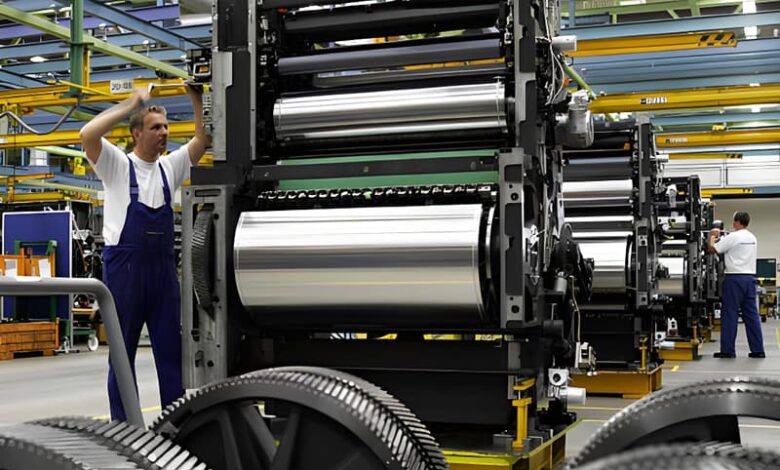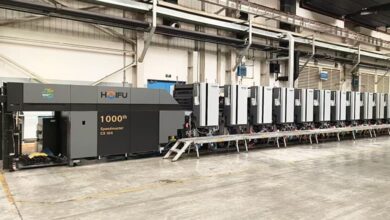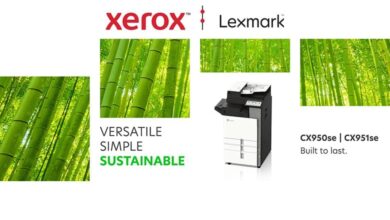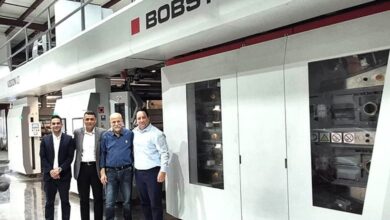Tariff Pause Gives Relief to German Printing Industry

In a temporary reprieve from rising trade tensions, former U.S. President Donald Trump has announced a 90-day pause on the implementation of proposed 25% tariffs on European imports — a move that has offered cautious optimism to German printing equipment manufacturers, who rely heavily on U.S. markets.
Koenig & Bauer: Holding Steady Amid Global Uncertainty
Koenig & Bauer, one of Germany’s leading printing press manufacturers, ended 2024 with solid financial results, reporting €1.3 billion in revenue and an adjusted EBIT of €25.8 million. The company credits a strong fourth quarter and record-level order backlog for the stability, even in the face of broader economic uncertainty.
Looking ahead, Koenig & Bauer anticipates a slight increase in revenue and improved operating earnings in 2025. However, executives have noted that the company’s long-term targets—especially for 2026—are increasingly dependent on macroeconomic and geopolitical developments, including the outcome of U.S. trade policy.
The imposition of import tariffs on selected products, which is currently being discussed in the United States, will not only affect Koenig & Bauer but also its main competitors, which are predominantly based in Europe. In principle, higher tariffs could exert pressure on demand in the US market and thus pose a challenge for the entire industry. The extent to which this decline can be offset cannot be conclusively assessed at this stage. In 2024, Koenig & Bauer generated around 29% (previous year: around 23%) of its revenue in North America and continues to view this market as strategically important. Current assessments indicate that the impact is likely to remain manageable. Due to its broad positioning in various markets and its continued efforts to enhance its efficiency, Koenig & Bauer sees itself well positioned to react flexibly to potential market risks and to additionally strengthen its competitiveness. It is pursuing a strategic and flexible approach in order to react quickly to changing economic policies and to secure its market position in the long term.
However, the 90-day pause on tariffs gives the company critical breathing room. North America is a key market for Koenig & Bauer’s highly specialized machinery, and any disruption could challenge its growth trajectory. With that in mind, the company continues to monitor trade developments closely while pushing forward with cost optimization and digital transformation initiatives.
Heidelberger Druckmaschinen: “No Need to Panic”
Heidelberger Druckmaschinen, another heavyweight in German printing technology, generates around €400 million annually from the U.S., which constitutes roughly one-sixth of its global revenue. CEO Juergen Otto has taken a measured stance in response to Trump’s tariff rhetoric, noting that “these threats should not be taken too seriously,” especially in light of the 90-day delay.
Otto emphasized that if tariffs were eventually enacted, the cost burden would likely fall on American customers. “There are no U.S. manufacturers producing large-scale printing equipment,” he pointed out, underscoring Heidelberg’s unique position in the market. In the meantime, Heidelberg is focusing on expanding its digital printing segment and reducing dependence on any single region.
Broader Concerns Linger
Despite the pause, concerns remain. The German Economy Ministry recently flagged the country’s “exceptionally high” exposure to tariff risks, especially in industrial exports. Think tanks like the Kiel Institute have warned that if the tariffs go ahead after the 90-day window, EU exports to the U.S. could fall by up to 17%, potentially dragging down European GDP by 0.4%.
This uncertainty is especially pressing for mid-sized industrial firms that rely on global supply chains and consistent trade conditions — sectors where Germany, and specifically its printing technology leaders, play a dominant role.
A Temporary Relief, not a Resolution
The temporary suspension of Trump’s proposed tariffs has given German printing equipment manufacturers some short-term clarity. But the broader picture remains complex. Companies like Koenig & Bauer and Heidelberger Druckmaschinen are using this window to reinforce their global strategies, diversify product lines, and push innovation—while preparing for potential policy shifts down the line.
In the ever-evolving arena of transatlantic trade, one thing is clear: agility and foresight will be just as valuable as engineering precision.





